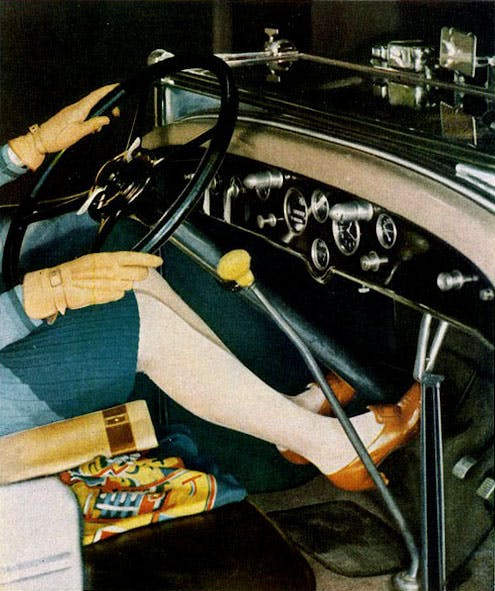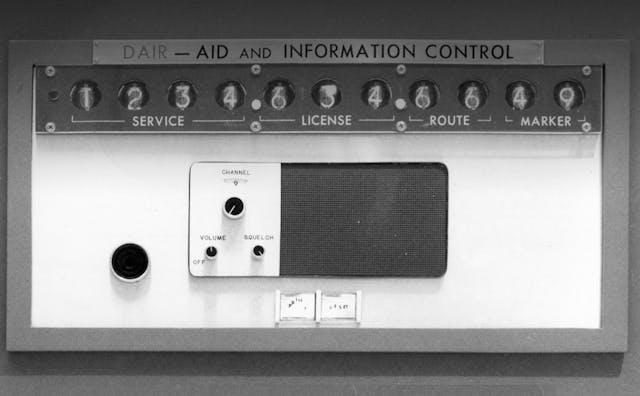These 16 automotive technologies showcase Cadillac’s pioneering spirit
With the Lyriq, Cadillac’s first EV and the herald of an all-electric lineup, GM is once again trying to restore the reputation of its luxury brand. GM has struggled to revitalize Cadillac for the last two decades, and, amid the hype of an electric revolution, it’s easy to overlook the innovations Cadillac has already brought to the auto industry.
While the brand’s early triumphs are well known, including its introduction of standardized parts (1908), the electric self-starter (1912), the first mass-produced V-8 (1914) and the first car designed by a stylist (1927), many of its other inventions are overlooked—even by GM itself. Even where Cadillac wasn’t the first to implement certain technologies, it deserves credit for refining them and bringing them to the masses.
Let’s take a ride through history.
Synchromesh transmission (1929)

In 1929, Cadillac introduced the synchromesh transmission after 12 years of research. Drivers no longer had to shift to neutral before shifting to the next gear. Now, the driver could push in the clutch and shift directly to the next gear. That same year, Cadillac became the first automaker to use safety-plate glass.
V-16 engine (1930)

In an attempt to leapfrog other luxury makes that offered eight- and twelve-cylinder engines, Cadillac introduced the world’s first V-16 engine in a passenger car at the New York Auto Show in 1930. The 7.4-liter engine generated 165 hp. Only Marmon attempted to match Cadillac with a 16-cylinder car—and died trying.
Selectable ride control (1933)
It’s de rigueur for today’s vehicles to feature selectable ride control, but Cadillac first offered it 88 years ago. The five-position, dashboard-mounted control changed the rebound on the shock absorbers, making the ride stiffer or softer.
Column-mounted shifter (1938)
Cadillac introduced the column-mounted gearshift lever in 1938, allowing three people to sit in the front bench seat.
Auto-dimming headlights (1951)
Automatic-dimming headlights are taken for granted nowadays, but they weren’t when Cadillac introduced its Autronic Eye in 1951. A prism lens caught the light of oncoming traffic and automatically dipped the car’s headlights until the other vehicle passed. The manually dimmed rearview mirror followed two years later.
Air suspension (1957)

The 1957 Eldorado Brougham, a limited-edition four-door hardtop, debuted with an industry first: air suspension. Cadillac’s setup employed an electrically-driven compressor that channeled air to bellows in each wheel. The pillowy ride wasn’t the Eldorado Brougham’s only claim to fame, however. This was a car filled with firsts, including a power driver’s seat (with memory), automatic door locks, low-profile tires, forged-aluminum wheels, and an automatic parking-brake release.
Automatic climate control (1964)
Automatic climate control, now ubiquitous, was introduced by Cadillac in 1964 as “Comfort Control.” Cadillac also introduced Twilight Sentinel, which automatically turned the lights on or off.
Tilt/telescope steering wheel (1965)

In 1965, Cadillac unveiled a steering wheel that tilted and telescoped, along with automatic rear load-leveling shock absorbers.
Heated seats (1966)
Though GM had patented the technology 11 years earlier, heated seats were first optional in 1966 on the Cadillac Fleetwood (front seats) and in the chauffeur-driven Fleetwood 75 (rear seats only). The system automatically activated when the ignition was turned on and the outside temperature fell below 50 degrees Fahrenheit. It shut off once the heater fan came on or when manually shut off by the driver. That same year, Cadillac became the first automaker to offer cars with variable-ratio steering.
Car alarm (1973)
Those of us awakened by the unwelcome sound of a car alarm have Cadillac to thank: It sold the first cars with factory-fitted anti-theft alarms. (In 1968, Chevrolet introduced an audio-only alert on the Corvette to protect against radio thefts, but the system was less extensive than Cadillac’s comprehensive anti-theft setup.) If the system was armed and you opened the door, you had 15 seconds to start the car. Opening the hood, trunk, or glovebox—or stepping on the brake pedal—would set it off immediately.
Cylinder deactivation (1981)

Cylinder deactivation is nearly ubiquitous in today’s engines. From the C8 Corvette to the 2021 Ford F-150, vehicles can shut off cylinders when their engines are under light load and thus scrounge fuel. Though the first car to use this principal debuted in 1905, Cadillac, in 1981, made cylinder deactivation mainstream.
The now-infamous engine was a 6.0-liter V-8 that automatically shut off cylinders to temporarily function as a 4.5-liter V-6 or a 3.0-liter V-4. But its computer-management systems weren’t sophisticated enough to make the feature work quickly or reliably, and the V-8 was dropped for 1985—not before doing severe damage to Cadillac’s reputation.
Rain-sensing wipers (1996)
Cadillac unveils Rainsense, the first system that automatically activates windshield wipers without driver input. The system used a rain sensor about the size of a wristwatch mounted ahead of the rearview mirror.
OnStar (1997)

OnStar, the auto industry’s first telematics system, debuted on 1997 Cadillacs as the realization of a concept developed by GM in 1966. Called the “Driver Aid, Information and Routing” system, it used a Citizens Band radio equipped with an encoder and a telephone dial to provide services OnStar would ultimately deliver. Revived as “Project Beacon” in 1995 using wireless communications, OnStar would be widely copied throughout the industry.
Adaptive seating (1998)
Cadillac introduced adaptive seating in the 1998 Seville STS, whose driver’s seat featured 10 adjustable air cells. This was followed in 1999 by an optional massaging seat.
LED lighting (2000)
The 1992 Seville was the first car to use LED lighting, though only in its high-mounted brake light. Eight years later, on the 2000 DHS, Cadillac used LEDs for all rear lighting elements. That same year, Cadillac introduced “NightVision,” which used a front-mounted infrared thermal imaging camera that projected an image onto the windshield of what lay ahead in the darkness that human eyes couldn’t see.
MagneRide (2002)
MagneRide debuted on the 2002 Seville, featuring dampers filled with fluid laced with iron particles, which are magnetized at different strengths by electromagnetic coils, changing the fluid’s viscosity—and each shock’s damping force—multiple times per second. Computer sensors throughout the car control the force of the electromagnetic coils. That same year, Cadillac became the first automaker to offer XM Satellite Radio as a factory-installed option.

